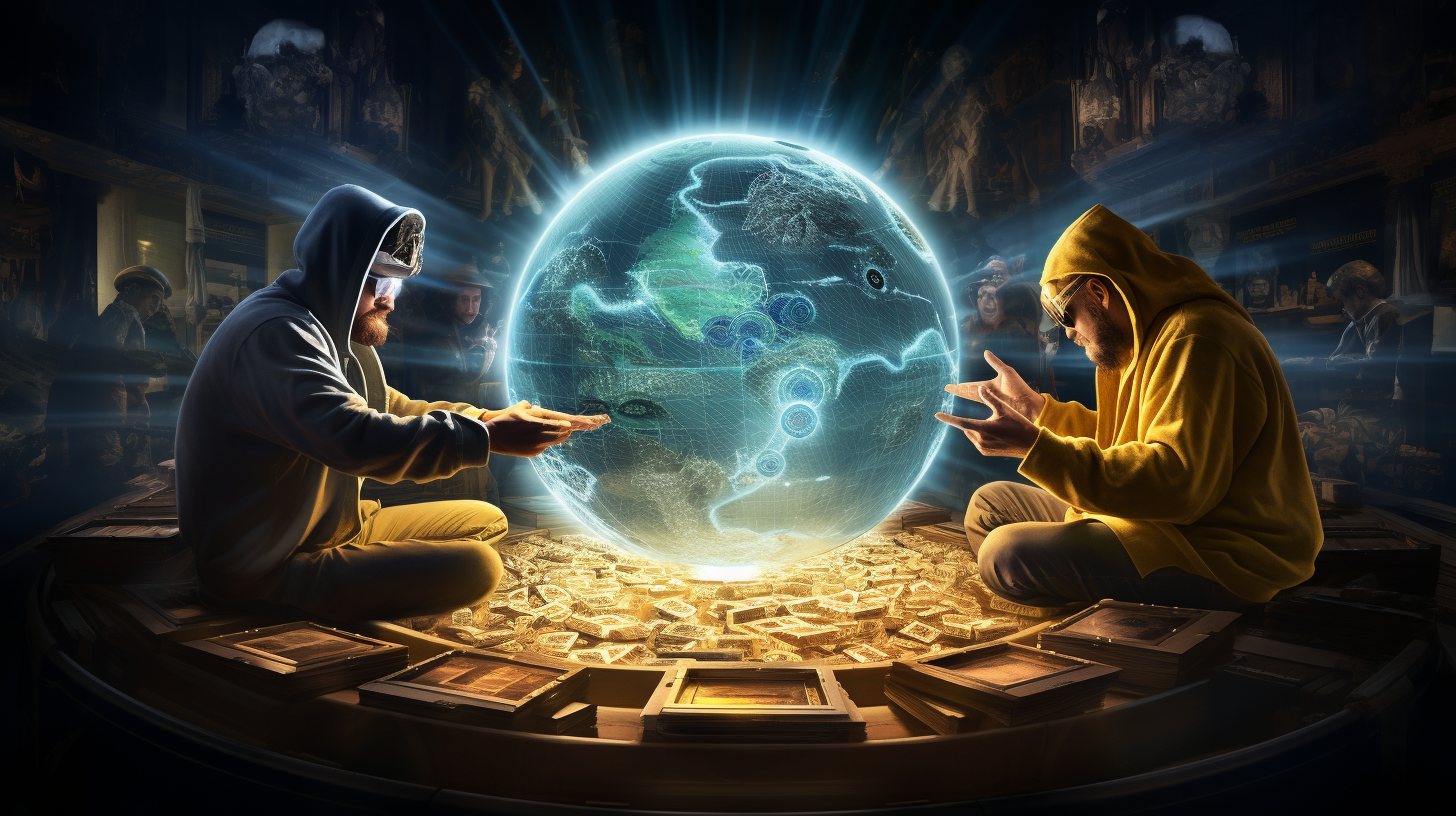Imagine a world where slaying dragons and crafting potions does more than level up your character: it fills your digital wallet with cryptocurrency. This isn’t a distant, mystical universe, but the reality of current online gaming economies. The fusion of massive multiplayer online games (MMOs) with the blockchain has birthed an exhilarating playground for crypto enthusiasts and gamers alike.
Following in the digital footsteps of our previous discussion on the ‘Gamers’ Goldmine’, today we delve deeper into the psyche of virtual economies, where cryptocurrencies reign supreme and gaming is more than mere entertainment—it’s an income stream.
At the heart of this revolution lies the ‘play-to-earn’ (P2E) business model. Players, now more than entrepreneurs of their virtual destinies, engage in gameplay not only for fun but financial gain. Cryptocurrencies like Bitcoin and Ethereum set the stage for in-game transactions, but the real stars are the game-specific tokens, which add a layer of exclusivity and economic control within each game’s ecosystem.
As these virtual realms swell in popularity, they’ve hewn a new type of marketplace, teeming with quests, battles, and trade fairs conducted in cryptocurrency. Within these spaces, ‘crypto cities’ have emerged—these are hubs within the games that operate entirely on digital currency, illuminated by the neon lights of innovation and possibility.
Consider the games that pioneer this trend: take Mythical Lands, where the entire in-game economy is powered by ‘Mythos’, a token with real-world value. Players can own land, trade goods, and provide services, getting remunerated in a currency that does not vanish upon logout. It’s a self-sustained economy that mirrors our society’s financial complexities and human interactions.
But what does this mean for the price of virtual leather boots or a potion of health? Well, welcome to the intricacies of a crypto-based supply-and-demand economy. Artisans and warriors operate as freelancers, and their goods and services price fluctuate based on market dynamics. It’s an economist’s dream and a game designer’s ultimate challenge.
Adventurers seeking a more laid-back pace can gravitate towards games like Etheria World, where building, farming, and crafting are serene paths to stacking crypto coins. And let’s not forget the thrill-seekers rampaging through War of Shards, where every victorious battle yields loot that transcends the screen and fattens real-life wallets.
Now, inherent in this economic gamer’s paradise are the non-fungible tokens (NFTs). These blockchain-certified assets ensure that when you acquire that legendary sword or elusive artefact, its uniqueness is undeniably your own. This unprecedented concept of ownership has transformed in-game assets into coveted investments.
For the skeptics pondering the perceived instability of cryptocurrencies, gaming economies offer a compelling counterargument. These controlled environments provide a testing ground for new economic theories, financial models, and regulatory frameworks that could reshape our understanding of value and ownership—a sort of ‘crypto petri dish’ if you will.
Yet, with great innovation comes great challenges. Regulation in a borderless cyberspace, protection against in-game crime, and ensuring fair and equitable play are the hydras of this new era. Where governments struggle to define cryptocurrency, game developers are now tasked with governing mini economies—hybridizing coder skills with those of a central banker.
So, whether you’re an Elven archer trading your bowmanship for Ethereum, or a mysterious mage concocting potions for profit, the line between gaming and real-world economics grows ever fainter. Crypto economies within virtual realms are no longer on the horizon—they are here, reshaping what it means to work, play, and prosper.
